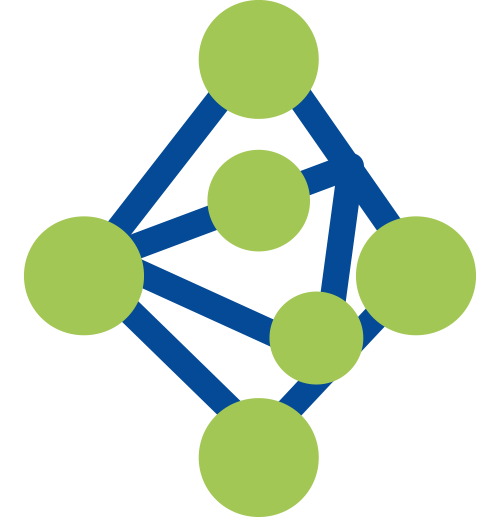In the fast-paced world of genomics, researchers are constantly seeking innovative tools to accelerate their discoveries. One such groundbreaking technology is custom array oligo pools, which have emerged as a game-changer for high-throughput screening applications. These pools offer unparalleled flexibility, speed, and cost-effectiveness, making them an indispensable asset for researchers working on complex projects like genome-wide CRISPR screens, functional genomics studies, and molecular diagnostics.
What are Custom Array Oligo Pools?
Custom array oligo pools are carefully curated collections of thousands of oligonucleotides, synthesized using cutting-edge proprietary technologies. These pools are designed to cater to the unique needs of each experiment, with no restrictions on sequence composition or minimum order quantities. The oligos within these pools can range up to approximately 230 bases in length, providing ample flexibility for a wide array of applications.

One of the key advantages of custom array oligo pools is their adaptability. Researchers can design pools to precisely match their experimental requirements, with the option to choose from two chip sizes to create pools of any desired size. This level of customization ensures that each pool is optimally tailored to the specific research question at hand.
Why Use Custom Array Oligo Pools?
The benefits of using custom array oligo pools are manifold. Firstly, they offer unmatched flexibility, allowing researchers to design pools that perfectly align with their experimental needs. This is particularly valuable for complex studies that require a large number of unique oligos, such as genome-wide CRISPR screens or high-throughput functional genomics assays.
Secondly, custom array oligo pools boast industry-leading turnaround times. With the fast delivery options, researchers can quickly obtain the oligos they need to move their projects forward without delays. This rapid turnaround is especially crucial for time-sensitive experiments or studies with tight deadlines.
Another key advantage of custom array oligo pools is their exceptional quality. The proprietary synthesis technologies used to create these pools ensure low batch-to-batch variability, providing researchers with greater confidence in their results when using multiple oligo pool batches. This consistency is particularly important for large-scale studies that require the use of multiple pools over an extended period.
Finally, custom array oligo pools offer a cost-effective solution for applications that require large numbers of oligos. Array-based synthesis is typically more economical than traditional synthesis methods when dealing with high-throughput experiments, making these pools an attractive option for researchers working with limited budgets.
Applications of Custom Array Oligo Pools
The applications of custom array oligo pools span a wide range of genomic research areas. One of the most exciting applications is in the field of genome editing, particularly in the context of CRISPR-based screens. Oligo pool gRNA libraries have revolutionized the way researchers conduct high-throughput screens for cancer therapy, diagnostics, and microorganism engineering. By using custom array oligo pools, researchers can design comprehensive gRNA libraries that target every gene in a genome, enabling them to identify key genes involved in specific biological processes or diseases.
Another important application of custom array oligo pools is in next-generation sequencing (NGS) target enrichment. By using oligo pools to selectively capture and enrich specific genomic regions of interest, researchers can significantly increase the efficiency and cost-effectiveness of their NGS experiments. This approach has proven particularly valuable for studies focused on specific gene panels, rare variants, or disease-associated regions of the genome.
Custom array oligo pools have also found extensive use in functional genomics studies. For example, researchers have successfully used array-synthesized oligo pools to directly construct CRISPRi plasmid libraries for high-throughput functional screens. By using these pools to generate libraries targeting every gene in a genome, researchers can systematically interrogate gene function and identify novel therapeutic targets or biological pathways.
Optimizing Your Research with Custom Array Oligo Pools
While custom array oligo pools offer numerous advantages, it's important to understand their limitations and how to overcome them to fully leverage their potential. One of the main challenges associated with array-synthesized oligos is their relatively short synthesis lengths, which can limit their utility for certain applications. Additionally, array-based synthesis is associated with higher error rates compared to traditional synthesis methods, which can impact the quality of the resulting oligos.
To address these limitations, researchers must carefully design their oligo pools and optimize their experimental protocols. This may involve using specialized software tools to design oligos with optimal properties, such as minimizing secondary structure formation or ensuring uniform melting temperatures. Researchers may also need to develop custom protocols for amplifying and purifying their oligo pools to ensure high-quality results.
Another important consideration when using custom array oligo pools is the challenge of assembling long constructs from complex pools. This can be particularly difficult when dealing with highly diverse or repetitive sequences. To overcome this challenge, researchers may need to employ specialized assembly methods, such as Gibson assembly or Golden Gate cloning, which are better suited for handling complex oligo pools.
Conclusion
Custom array oligo pools are a transformative technology that is revolutionizing the field of genomics. By offering unparalleled flexibility, speed, and cost-effectiveness, these pools are enabling researchers to tackle complex research questions and accelerate the pace of discovery. As the technology continues to evolve and improve, it's likely that custom array oligo pools will become an increasingly essential tool in the genomics toolkit.
However, to fully realize the potential of these pools, researchers must be willing to invest time and effort into optimizing their experimental designs and protocols. By carefully considering the limitations of array-based synthesis and developing strategies to overcome them, researchers can ensure that they are getting the most out of their custom array oligo pools.
Ultimately, the key to success with custom array oligo pools lies in understanding their unique properties and how to leverage them for specific research applications. Whether you're working on genome editing, NGS target enrichment, or functional genomics studies, custom array oligo pools offer a powerful and versatile tool for advancing your research. By staying up-to-date with the latest developments in this rapidly evolving field, researchers can ensure that they are well-positioned to take advantage of this exciting technology and make groundbreaking discoveries in the years to come.
FAQs
What are the main applications of custom array oligo pools?
Custom array oligo pools are used in a variety of genomic research applications, including:
- Genome editing (e.g., CRISPR-based screens)
- Next-generation sequencing (NGS) target enrichment
- Functional genomics studies (e.g., CRISPRi screens)
- Gene synthesis and assembly
- Molecular diagnostics and detection
How long can the oligos in a custom array pool be?
The oligos in a custom array pool can be up to approximately 230 bases in length. This length is sufficient for most common applications, such as gRNA libraries or NGS probes.
What are the advantages of using custom array oligo pools compared to traditional synthesis methods?
Custom array oligo pools offer several advantages over traditional synthesis methods:
- Flexibility: Pools can be designed to meet specific experimental needs
- Speed: Industry-leading turnaround times
- Quality: Low batch-to-batch variability for consistent results
- Cost-effectiveness: More economical for applications requiring large numbers of oligos
How can I optimize my experiments when using custom array oligo pools?
To optimize your experiments with custom array oligo pools, consider the following strategies:
- Use specialized software tools to design oligos with optimal properties
- Develop custom protocols for amplifying and purifying oligo pools
- Employ assembly methods suited for complex pools (e.g., Gibson assembly)
- Carefully consider the limitations of array-based synthesis and plan accordingly
By understanding the unique properties of custom array oligo pools and investing time in optimization, researchers can leverage this powerful technology to its fullest potential and accelerate their genomic discoveries.
 NGSHybridization Capture DNA Probe QuarStar Human All Exon Probes 4.0 (Tumor) QuarStar Human All Exon Probes 4.0 (Standard) QuarStar Liquid Pan-Cancer Panel 3.0 QuarStar Pan-Cancer Lite Panel 3.0 QuarStar Pan-Cancer Fusion Panel 1.0 QuarStar Pan Cancer Panel 1.0 Hybridization Capture RNA Probe QuarXeq Human All Exon Probes 3.0 HRD panel Library Preparation DNA Library Preparation Kit Fragmentation Reagent mRNA Capture Kit rRNA Depletion Kit QuarPro Superfast T4 DNA Ligase Hybridization Capture QuarHyb Super DNA Reagent Kit QuarHyb DNA Plus 2 Reagent Kit QuarHyb DNA Reagent Kit Plus QuarHyb One Reagent Kit QuarHyb Super Reagent Kit Pro Dynegene Adapter Family Dynegene Blocker Family Multiplex PCR QuarMultiple BRCA Amplicon QuarMultiple PCR Capture Kit 2.0 PathoSeq 450 Pathogen Library Corollary Reagent Streptavidin magnetic beads Equipment and Software The iQuars50 NGS Prep System
NGSHybridization Capture DNA Probe QuarStar Human All Exon Probes 4.0 (Tumor) QuarStar Human All Exon Probes 4.0 (Standard) QuarStar Liquid Pan-Cancer Panel 3.0 QuarStar Pan-Cancer Lite Panel 3.0 QuarStar Pan-Cancer Fusion Panel 1.0 QuarStar Pan Cancer Panel 1.0 Hybridization Capture RNA Probe QuarXeq Human All Exon Probes 3.0 HRD panel Library Preparation DNA Library Preparation Kit Fragmentation Reagent mRNA Capture Kit rRNA Depletion Kit QuarPro Superfast T4 DNA Ligase Hybridization Capture QuarHyb Super DNA Reagent Kit QuarHyb DNA Plus 2 Reagent Kit QuarHyb DNA Reagent Kit Plus QuarHyb One Reagent Kit QuarHyb Super Reagent Kit Pro Dynegene Adapter Family Dynegene Blocker Family Multiplex PCR QuarMultiple BRCA Amplicon QuarMultiple PCR Capture Kit 2.0 PathoSeq 450 Pathogen Library Corollary Reagent Streptavidin magnetic beads Equipment and Software The iQuars50 NGS Prep System Primers and Probes
Primers and Probes RNA SynthesissgRNA miRNA siRNA
RNA SynthesissgRNA miRNA siRNA



 Gene Synthesis
Gene Synthesis Oligo Pools
Oligo Pools CRISPR sgRNA Library
CRISPR sgRNA Library Antibody Library
Antibody Library Variant Library
Variant Library



 Tel: 400-017-9077
Tel: 400-017-9077 Address: Floor 2, Building 5, No. 248 Guanghua Road, Minhang District, Shanghai
Address: Floor 2, Building 5, No. 248 Guanghua Road, Minhang District, Shanghai Email:
Email: Tel: 400-017-9077
Tel: 400-017-9077 Address: Floor 2, Building 5, No. 248 Guanghua Road, Minhang District, Shanghai
Address: Floor 2, Building 5, No. 248 Guanghua Road, Minhang District, Shanghai Email:
Email: 







